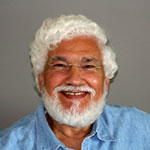September 9, 2017
The Mummies: There are much more to ancient Egypt
With the 2017 release of The Mummy starring Tom Cruise, public interest in ancient Egyptian civilization has multiplied. Mummies and the story of mummification have grabbed attention far and wide, coming second in world popularity only to the Great Pyramids of Giza.
Of course, that’s a very good thing for building tourism, which in turn boosts the country’s economy. But ancient Egyptian civilization is so much more than mummies and pyramids and rightly deserves more attention from scholars and the general public.
A closer look at many 5000-year-old monuments that have survived to this day shows that advances in the natural sciences, engineering, physics, chemistry, medicine, optics, law, astronomy, architecture, religion, music and the arts were all important components of Egyptian society, many centuries before they became established knowledge in Europe and the West.
For example, one aspect of this amazing civilization to have received recent attention is its ancient literature.
A key reason why ancient Egyptian civilization was so diverse in its achievements is that Egypt is the oldest country in the world with a continuous central government. Its comparative political stability in turn fostered state-supported research in sciences, religion, law, and the arts, including literature.
Ancient Egypt was blessed in another unique and fortunate way. Its people did not have to struggle every day to feed or clothe themselves like so many others of their time.
The great river Nile provided them with regular abundance – a large variety of grains, vegetables, and fruits to eat; fresh water to drink and for irrigating their crops; easy transportation by boat the entire length of the country; and the best cotton in the world to make fashionable and durable clothing.
Thanks to the generosity of “mother Nile,” ancient Egyptians had the priceless wealth of time – time to study, build, innovate, sing, dance, worship, hunt, play at sports, write poetry and fiction, and live life to the fullest in every way.
In fact, Egypt developed what could truly be called one of the first world literatures, for creative writing was actively sponsored by the state, which provided handsome financial support and public recognition for its authors. Many of their works were recorded in the world’s first bound books, made of sheets produced from a local dried plant called papyrus (origin of the word paper), which is still grown and used today.
Quotations from these stories and poems were often inscribed in the décor of temples, tombs and palaces and when popular writers died, scrolled copies of their work were buried with them as a mark of honour.
One of ancient Egypt’s best-known literary classics is the 4000-year-old Tale of the Eloquent Peasant.
To this day, many of its poems are still quoted and studied. This work was the subject of R. B. Parkinson’s 1988 doctoral thesis.
Parkinson, who is now Professor of Egyptology at Oxford University, included the Eloquent Peasant in his highly recommended 1999 book, The Tale of Sinuhe and Other Egyptian Poems, 1940-1640 BC.
In describing his approach to these millennia-old works Dr. Parkinson said, “I have made my translations (into English) deliberately literal.”
He continues: “Around 1800 BC in the reign of the great King Amenemhat III, a man lived at Thebes whose position in the state bureaucracy was high enough for him to build a tomb on the west bank of the Nile… Like others of his position and education, he was proud of his knowledge of literature, and he copied out on a reused roll of papyrus in his own professional hand, the highly regarded Tale of Sinuhe, which had been composed at the royal court in the north in his grandfather’s time. He also made his own copy, with some enthusiasm and haste, of another fine work, The Tale of the Eloquent Peasant; this copy lacked the end of the poem, but he later managed to acquire part of a roll that included the final stanzas … He also possessed a roll with the poetic Dialogue of a Man and his Soul.”
The Tale of the Eloquent Peasant is about a peasant whose donkey stumbled upon the property of a noble. The noble’s property manager confiscated the donkey and beat up the trespassing peasant. But the peasant persisted in appealing for justice and his appeal finally reached the ears of the King.
The King was so impressed at the peasant’s eloquence that he ordered the man’s petition to be set down in writing before administering justice in the case.
So, every day, for the next nine days, the peasant spoke words of wisdom to the ruler, praising the value of justice, even for the poor and marginalized like himself. He told him that no one could be a true king of Egypt who did not administer justice equally for all.
On the tenth day, the King ordered that the peasant’s donkey be returned to him, along with due compensation for his suffering and inconvenience.
Here are just two examples of what the peasant said during the ninth day of his audience with the King:
My lord! The tongue of men is their balance; and scales are what detect deficiency, dealing punishment to the punishable: let the standard be like you!
and
Truth is the property of Falsehood, which lets it flourish, but Falsehood has never been gathered in. He who is rich with it has no children, no heirs on earth. And he who sails with it cannot touch land, his boat cannot moor in its harbor.
The tale concludes with one short line:
So, it ends [from start to finish, as found in writing].
As with many other examples in ancient Egyptian literature, The Tale of the Eloquent Peasant upholds principles of good governance and social well-being that were at the heart of a civilization whose vast roots go far beyond pyramids and mummies.








